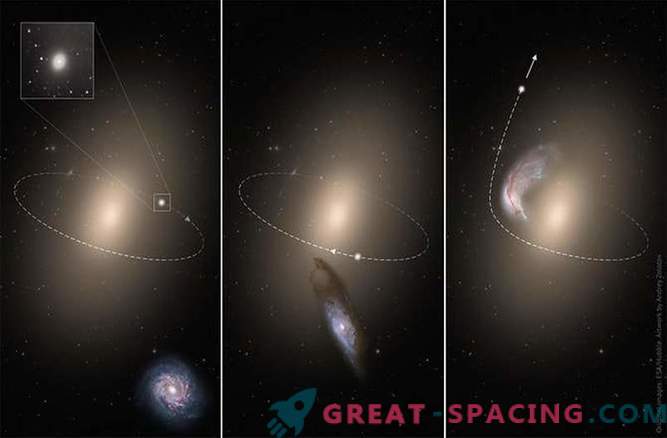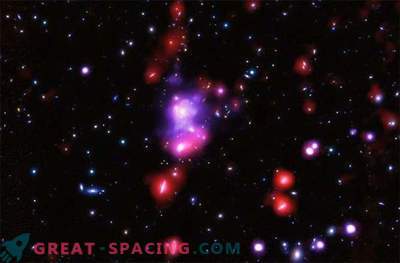
As well as the stars that can leave their galaxies and travel through intergalactic space, astronomers have discovered as many as 11 galaxies that have undergone gravitational turbulence and have been thrown from their native clusters into intercluster space.
“These galaxies have a lonely future - to be expelled from a cluster of galaxies,” said Igor Chilingaryan, an astronomer from the Harvard-Smithsonian Center for Astrophysics and Moscow State University.
Escaped stars can be ejected from their galaxies if they travel at a higher speed than the galaxy’s cosmic velocity. In order for a star to leave the galaxy, it is necessary that its speed be 537 km / s (more than 1.2 million miles per hour!).
Thus, you can imagine what the speed should be so that the whole cluster could leave the limits of the galaxy cluster. It is from 3000 km / s (6000000 miles per hour!), Depending on the mass of the cluster.
11 runaway galaxies were found by chance when Chilingaryan and co-researcher Ivan Zolotukhin from the Institute of Astrophysical and Paleontological Research and Moscow State University were processing data obtained using the Sloan digital sky survey project and the GALEX orbital space telescope. These tiny galaxies are rare, but researchers were able to detect 200 previously unknown compact elliptical galaxies, 11 of which were located alone and were separated from the galactic cluster. And they moved very, very fast.
“The first thing we discovered was compact elliptical galaxies located in a cluster. That was what we were looking for. But then we expanded the search and found something strange,” said Zolotukhin.
And so, how did these tiny galaxies, which are about 1000 times smaller than our own galaxy, ended up so far from home?
Researchers believe that a similar gravitational mechanism, which gives rise to runaway stars, can be applied to these elliptical galaxies.
“We asked ourselves how this could be explained? The answer was simple: triple interaction,” said Chilingaryan.
Triple interaction is an event when one star from a binary pair deviates too close to a black hole. Then the star receives additional acceleration and is pulled out from a gravitational vice. In the case of a compact elliptical galaxy, this effect is achieved by interacting with the parent, larger galaxy.











































